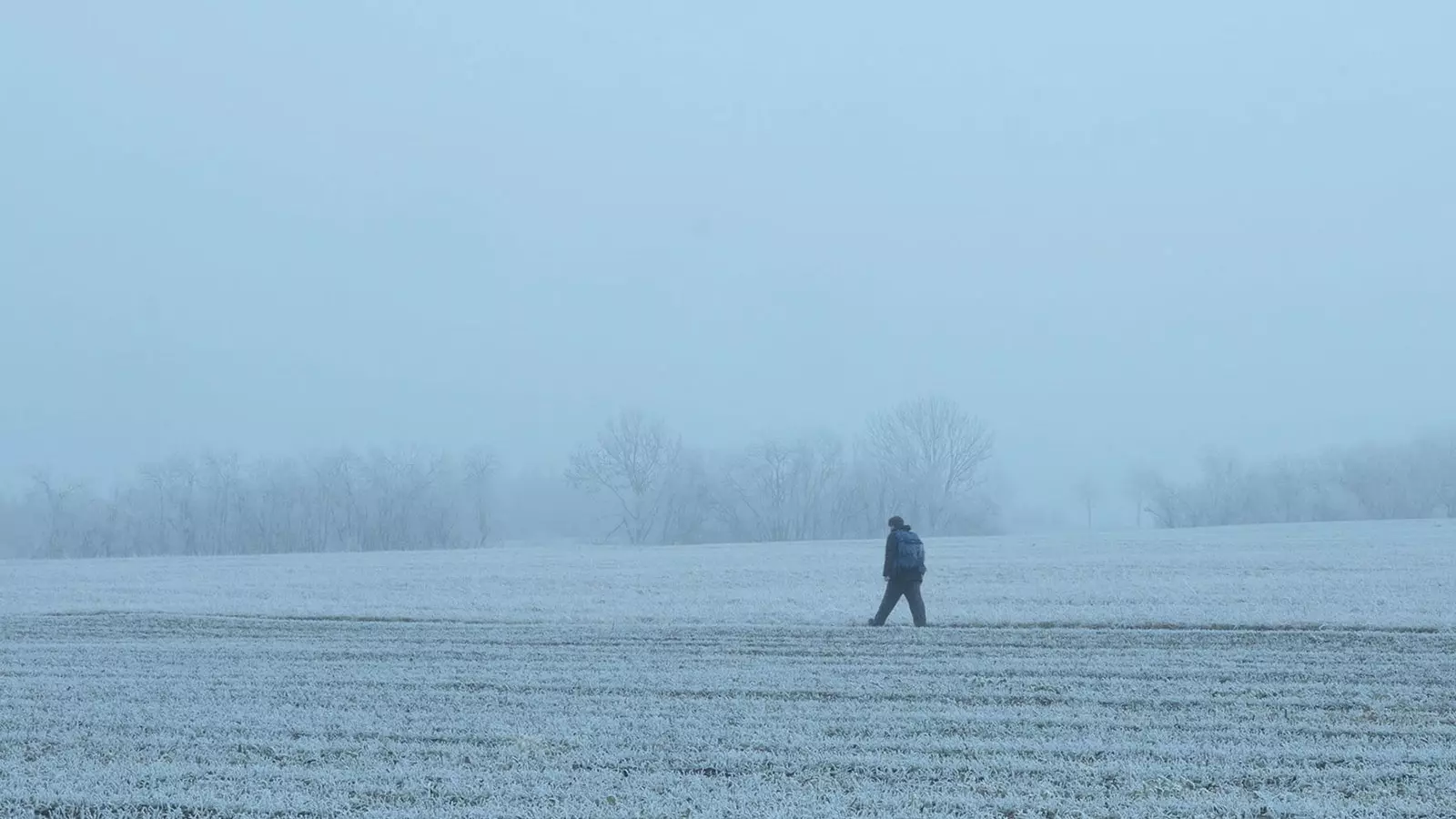
Herzog walked with him.
Almost 750 kilometers, a journey between Munich and Paris, with stops, steps forwards and backwards, unexpected entertainments with a wild horse, with a bear and with oneself, face to face with his fears. That's it Dear Werner (Walking on Cinema), documentary of Pablo Maceda, premiered at the last Festivla de Sevilla and that hits theaters November 20. A path on foot alone, with a camera, a map and a book: From Walking on Ice by Werner Herzog in which the Bavarian filmmaker picked up that path, made on foot in 1974, with a promise: to save from death Lotte Eisner, her friend and a key figure in the seventh art, as a critic and co-founder of the Cinémathèque Française.
46 years later, and after a new financing blow for his next feature film, The unknown woman (which will finally shoot in 2021), director Pablo Maqueda (Manic Pixie Dream Girl, 2013) once again returned to his master's book. “It has been a very important book in my life, I return to it whenever I want to motivate myself, inspire myself, and when I received this blow I saw it very clearly, because that image of the filmmaker walking alone in the cold has always seemed to me a very powerful metaphor for the path of creation”, he comments he. And rereading it, he thought: “If Herzog walked that distance to try to save Lotte Eisner, I will be able to walk it to try to give back a little the desire to make movies and make a film for the simple pleasure of making it, not thinking about a logic of commerce, release, distribution... just the pleasure of making it and of enjoy the experience”.
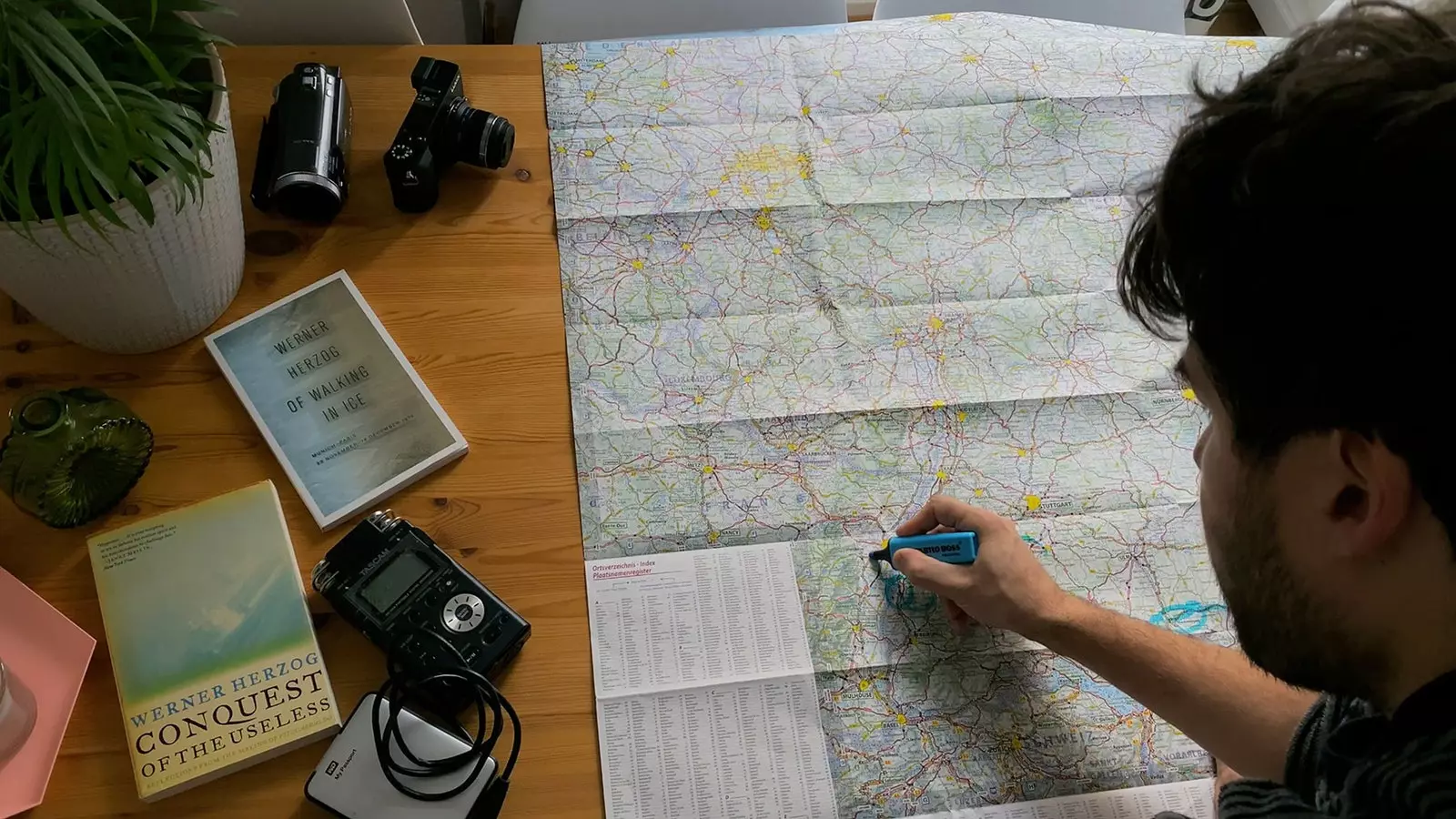
Map, camera and love of cinema.
And boy did he enjoy it, although he also suffered it. After a previous process of preparing the trip trying to decipher "the cryptic words" of Herzog, he designed the path thanks to new technologies, preserving a spirit “very searching, very improvisational, very herzogian in the sense of conquest”, and he left for Munich in January. He filmed his steps and his encounters, his reflections, for a month, walking alone through empty, gray, foggy, dark landscapes and, above all, emotional landscapes. With a ghost companion: Werner Herzog, his words guided him and, in the end, he also guides the viewer, because the director of Fitzcarraldo, after seeing Dear Werner, decided lend his deep voice to reread his own text throughout this journey with 11 fundamental stops that Maqueda runs again for us.
**Munich: “Start of the trip, city where Herzog lived. Munich Film Museum, Stadelheim Prison. City center cinemas. **
Here he started his journey, his path, his rediscovery. “The objective was not to reach the goal, the objective was the path itself”, Maqueda says. “Haizea (G. Viana, the producer of Dear Werner) told me that if the film was not to my liking I could always put it in a drawer but I could always keep the experiences to myself and it is something that has also changed me”. Spending an hour in the cold making a fuss for a cow to look at him or follow a wild horse for an hour to get it on camera or even caress it on shot are some of the experiences that he had not lived before and have marked him as a director. “Because doing autofiction is not an easy thing. It seemed very nice to talk about the filmmaker not in terms of success, but in terms of failure, search for himself, and a little to dignify all the filmmakers who today continue to try to build projects while they work, to make ends meet, that working class consciousness associated a lot with film direction to which I I feel very close”.
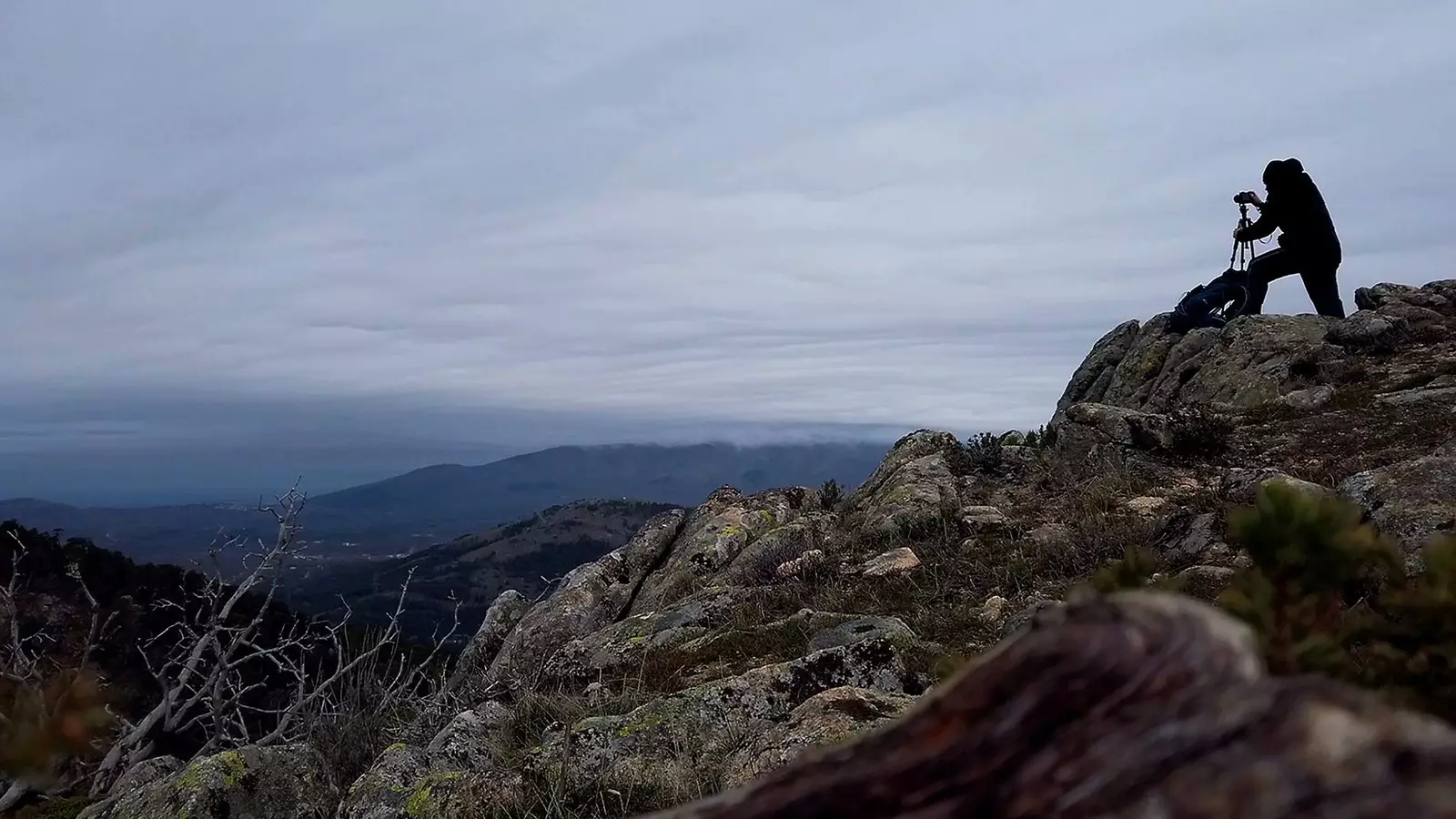
Walking on Cinema.
Alling: “Where Herzog spent his first night. The dome of the church of typical German religious architecture caught my attention, in which he tried to spend the night hidden and could not, fleeing at the last moment.
Arriving in that town and seeing Herzog's descriptions live moved him. "He describes all the elements of that small town: 'At the door of a basilica there are two cypresses and on those cypresses I let all my fear pass'. When I arrive I find those two cypresses before me, the basilica in which he tried to spend the night but there was a dog inside and he couldn't, the soccer field next door, and the semi-ruined house... Seeing those landscapes was almost like dialoguing with the past, because I was reading the book, a book that I have heavily underlined, full of annotations. For me it was very exciting to find places described 46 years before and to have them almost identical before my eyes because shooting in the middle of winter, in January, I have come across Totally lonely landscapes, very romantic…”.
The river Lech: "Herzog was very afraid of how to cross it and then he realized that it was not a big deal."
Unterroth: "There are many caves here like the ones in the movie."
Maqueda followed "the fragile itinerary" that marked From walking on ice to “generate not only physical landscapes, but also emotional ones”. personal metaphors. The cave, for example, associated with his frustration when trying to get projects off the ground. The mountains and peaks as an example of closed doors when seeking financing.
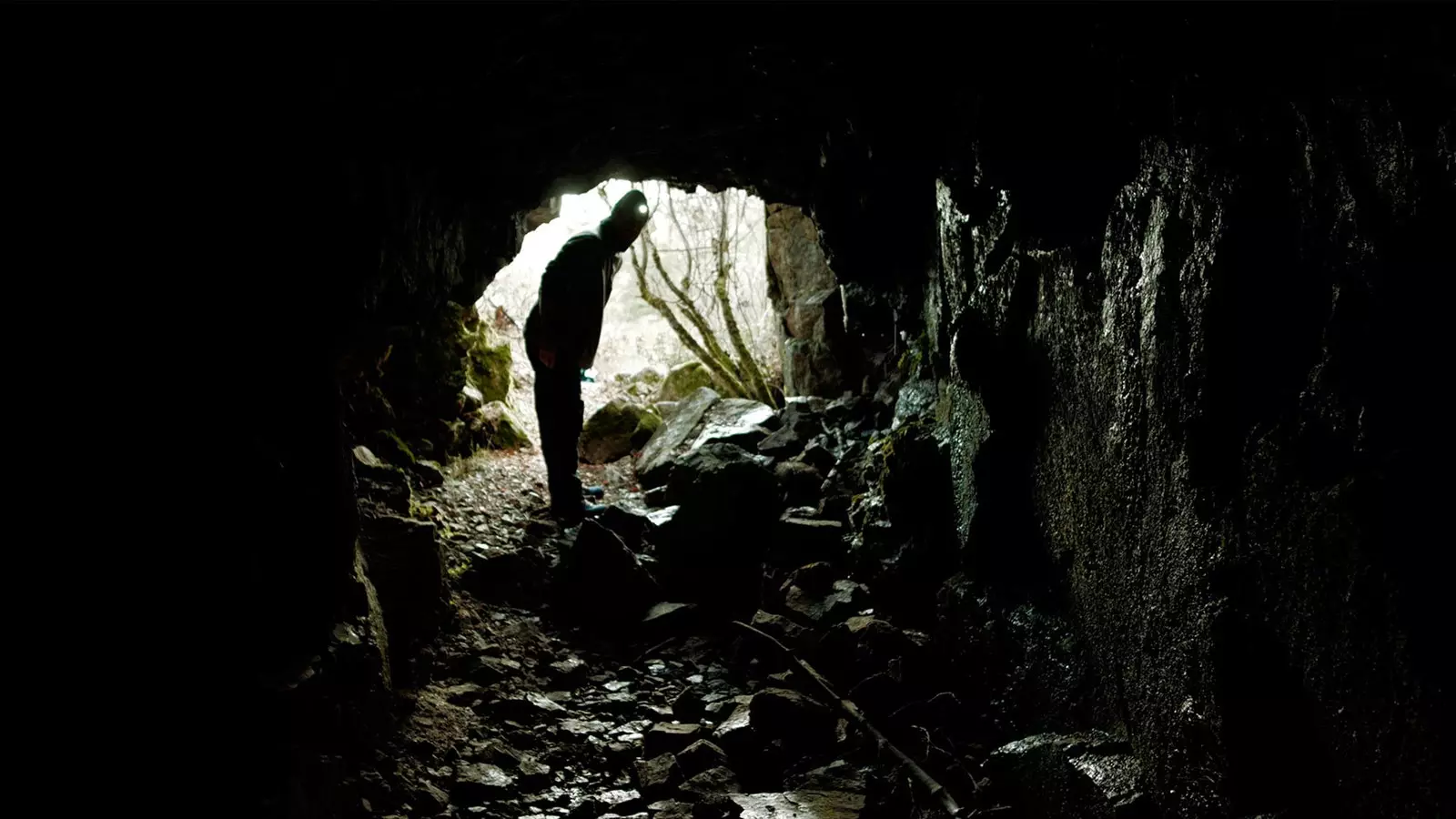
The myth of the cave: the final reunion.
German Black Forest: “In places like Hornberg or Gutach, the natural, green and humid landscapes were overwhelming, like the star of Aguirre, the wrath of God”.
Here he was "completely free from any bondage." For him this wooded landscape was a visual example of chaos and destruction that we provoke in nature, but as she is always stronger than the human being. “Finding a 40-meter-high waterfall almost out of nowhere was a Herzogian epiphany, it was very important to me, I still remember it,” says the filmmaker.
Germany's border with France: "Rhine River, here I found many flags of both countries twinning many territories."
Andlau: “The château d'Andlau, a good summary metaphor of Herzog's most medieval cinema”.
Raon-L'Etape: "Classic French vineyards laden with grapes, the landscape couldn't be more French."
Domrémy-la-Pucelle: “The birthplace of Joan of Arc. Dedicating a chapter to him in the film was a must. I found myself in a ghost town dominated by cold and fog.
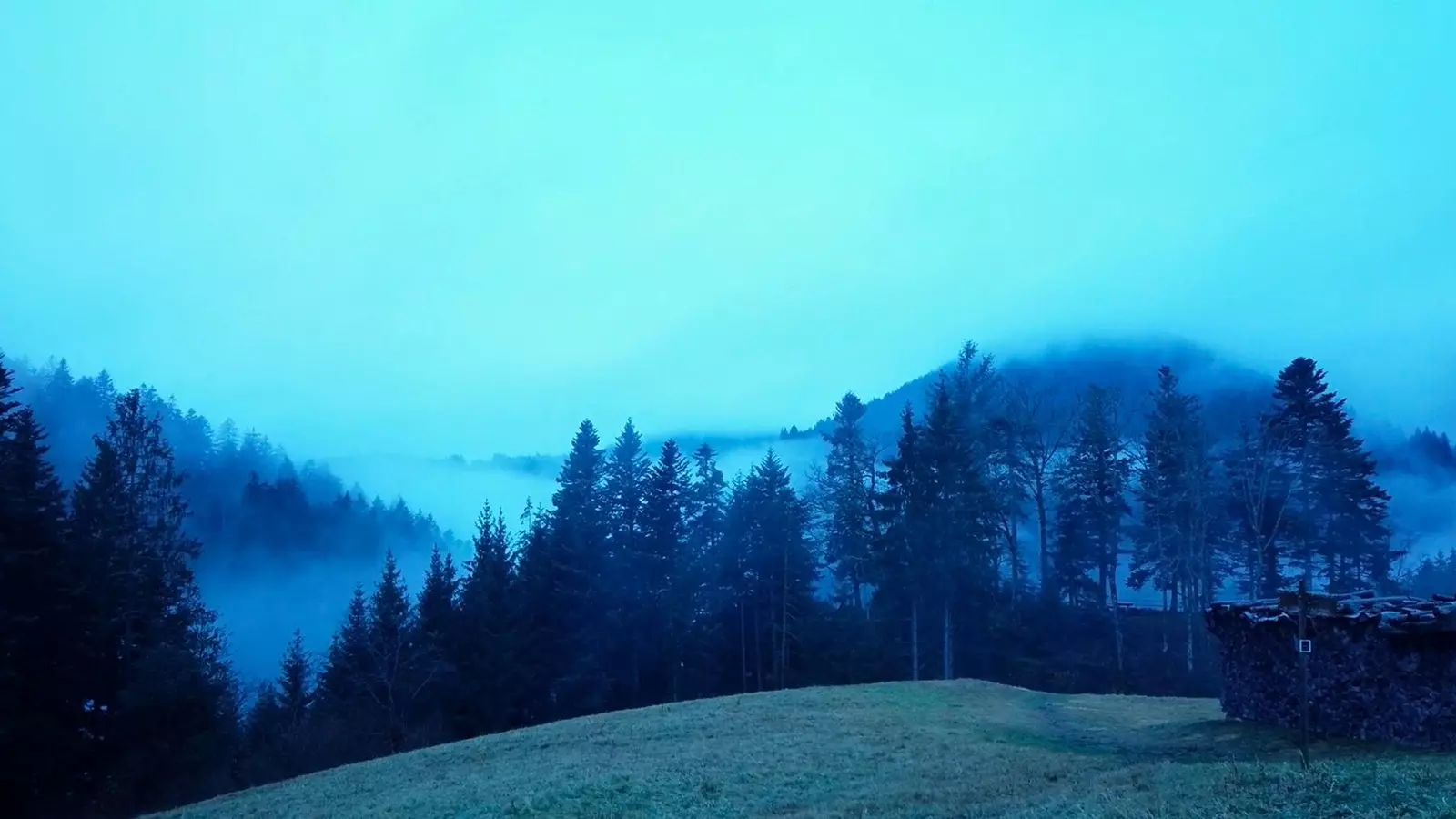
Foggy, cold and emotional landscapes.
Paris: “The French Cinematheque, penultimate stop on my trip. All filmmakers are heirs to his love for the seventh art”.
Maqueda traces his love for the cinema to the first time he saw Psicosis and discovered that film directors were magicians. Cinema and he are one person, he says. “I have come to record this film with a lot of interest from pay this homage not so much to Herzog but to cinema, hence also the subtitle of walking on cinema because it seems to me that cinema is very brittle like ice…”, he counts. And looking at the past, vindicating Lotte Eisner, Henri Langlois, Agnès Varda or the Nouvelle Vague, he wants to reflect on the present and future concept of what cinema is today. “The durations, the series, is a YouTube video cinema or not?”.
Paris: “Lotte Eisner's house in the Neuilly-sur-Seine neighborhood. End of the road. The tribute to her person is transfigured into a tribute to Haizea, my own Lotte. My guardian angel".
"As I was progressing along the way and reflecting, it seemed very nice to dedicate the film to her and to all those people who support us to carry out projects and do not focus on them but on the people they are supporting emotionally," he says. Pablo. In his case, Haizea is not only her producer, she is also her partner. “The love, both professional and sentimental, seemed to me that it was also very nice that it was clear that if Herzog walked for Lotte, I walked for her”.
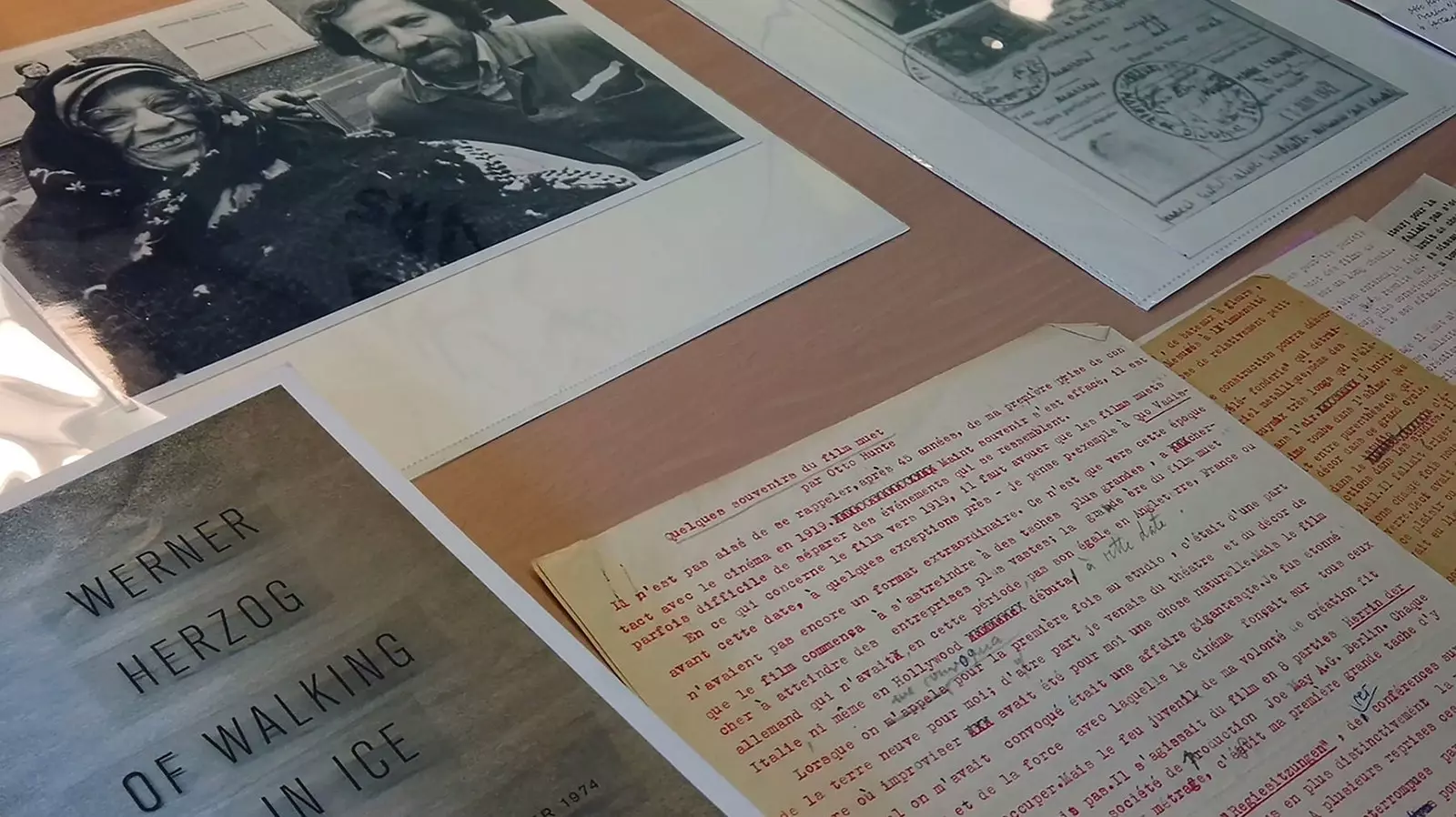
Movie memories.
